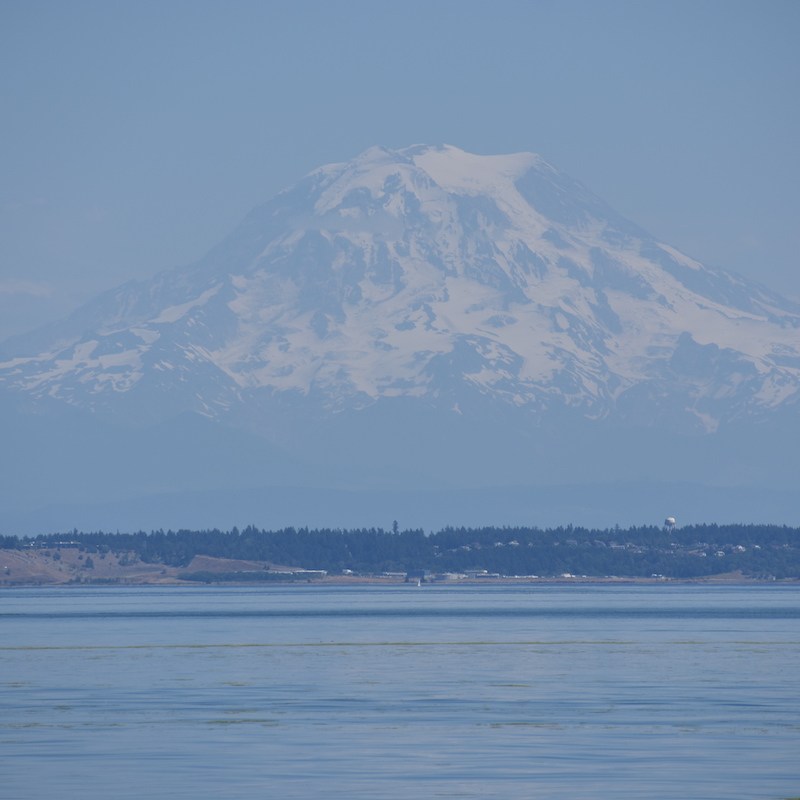
The Washington State Park system has a bevy of beautiful scenic parks that rival the state’s three iconic national parks. Parks range from coastal beaches to mountain peaks and even a petrified forest. Breathtaking views from hikes both easy and challenging. One of the best things I love about Washington State Parks is that they are pet friendly, and dogs are allowed on the trails (leashes required).
Videos by TravelAwaits
If you plan to visit Washington for any length of time, purchase the annual Discover Pass for $30. A one-day pass is $10 so it pays for itself with just three visits. The parks mentioned in my list all have other parks just a short drive away. You can purchase a pass online, at a park, or at more than 600 licensed vendors.
Pro Tip: You can search for a Washington State Park by region. This is an easy way to find parks near your destination. I do this whenever I am taking a road trip as some of the parks are close to major highways and you can take a short break to stretch your legs or have a picnic.

1. Larrabee State Park
Getting to Larrabee State Park is as scenic as the park due to the incredible drive along the historic Chuckanut Drive. This is where the Cascade Mountains seem to hug the sea. It is a breathtaking drive with many scenic overlooks that have interpretive signs about the highway’s history. Larrabee is Washington’s first state park. On the western side, there is a parking area and a stroll down to a lovely cove with views of Samish Bay and the San Juan Islands. The trail down to the cove is relatively easy, but it is uneven with a bit of an incline coming back up, which could be a challenge if you have mobility issues.
On the east side of the park across Chuckanut Drive, you can access a trail to Lost Lake. The Interurban Trail, a former railway, connects you to the town of Fairhaven about 6 miles each way. The packed gravel and dirt trail is relatively easy and is also bikeable. Forests break away to views of Bellingham Bay and beyond.
Pro Tip: The Chuckanut Drive is part of Highway 11, which passes by the quaint little towns of Bow and Edison. Both are worth a stop even if you just visit the bakeries in each town. Super cute and tasty too.

2. Beacon Rock State Park
Have you ever wanted to hike one of those epic hikes to the top of the mountain but weren’t sure you could make such a challenging hike? Then Beacon Rock State Park is for you. Beacon Rock at 848 feet is one of the world’s largest monoliths and is an impressive landmark throughout the Columbia River Gorge National Scenic Area. The trail is 1.8 miles round trip, and you will ascend to the top of the rock via 52 switchbacks making the elevation gain very slight between turns. The trail clings to the side of the rock and traverses both sides of Beacon Rock for impressive views of the Columbia River Gorge. From the top, you can see the Bonneville Dam, the Pierce Wildlife Refuge, and Oregon.
For those less mobile, visit the Doetsch Walking Path, a 1-mile loop that circles the old Doetsch Ranch property. It is flat with benches to rest on and view nature and the many birds in the area. The trail is ADA accessible.
Pro Tip: While in the area, visit Stevenson, a cute small town on the Columbia River. There are waterfront restaurants, and don’t miss the Columbia Gorge Interpretive Center Museum. In addition to highlighting the history of the area, it has the largest collection of Rosaries in the world. The most significant in the collection was donated by President John F. Kennedy, who used the wood bead rosary during World War II.

3. Palouse Falls State Park
The 94-acre Palouse Falls State Park is literally in the middle of nowhere, and you will drive through miles of wheat fields to get here, but it is well worth the trip. It was named Washington’s state waterfall in 2014 and is one of the last active waterfalls on the Ice Age floods path. These floods played a huge role in shaping the region’s geography. The waterfall forms when the Palouse River plunges through a narrow cataract 200 feet into a bowl. It then continues through a gorge. There are three different overlooks from the parking lot, and each has a distinct view of the falls, so I would go to all three. Also, there are different interpretive signs.
There is a trail along the rim and people do hike down to the base of the falls. I would use the term trail loosely as it is very steep with lots of loose rock and, at one point, a rope to help you navigate the steep terrain. I wouldn’t recommend it unless you are fit and experienced with uneven terrain.
Make sure you are prepared for a remote experience. Set out with a full tank of gas. There is no cellphone service in the park and park staff are not always available. Bring your own water and toilet paper. Be prepared for extremely hot temperatures in the summer. I would also have a picnic lunch or snacks.
Pro Tip: If you visit from July to mid-September, you will see miles and miles of ripened wheat as the harvest begins. I finally understand the line “Amber Waves of Grain” from the song “America the Beautiful.” It is stunning and something I will never forget.

4. Penrose Point State Park
The lovely Penrose Point State Park is on the Key Peninsula and overlooks Mayo Cove. The water is so clear you can see crabs and other shellfish. This park is very popular with locals for camping and harvesting nature’s bounty of clams, oysters, and crab when in season. This is also the place to go to get money shots of Mount Rainier. For some reason, the mountain appears to be floating on air and loams so large in photographs. It is an incredible view. Bald Eagles frequent the area as well. The park is 237 acres and has 2 miles of frontage on Mayo Cove and Carr Inlet. There is hiking through the coastal forest with a variety of trees, including Pacific madrone and the western red cedar. At low tide, you can walk out on a sandy spit.

5. Ginkgo Petrified Forest State Park
The Ginkgo Petrified Forest State Park is one of the more unique Washington State Parks. The Civilian Conservation Corps played a large role in establishing the in 1935. They constructed the interpretive center as well as the Trailside Museum. Begin your visit at the Ginkgo Petrified Forest Interpretive Center, which sets on a cliff face overlooking the mighty Columbia River. Inside, learn all about the Ice Age floods, which impacted this area and carved out the basalt landscape. Also learn about the history of this petrified forest and see a rare display of ginkgo petrified wood. Outside is a picnic area, petrified wood you can touch, and views of the river.
Petrified wood is Washington’s official state gem. You can see quite a bit of it on the Trees of Stone Interpretive Trailhead, which is 2 miles away from the interpretive center. The 1.25-mile interpretive trail begins in an ancient fossil bed with almost two dozen rare, petrified logs. This is one of the most unique petrified forests in North America due to the diversity of tree species discovered here. They are all encased in a cage due to the risk of theft. There is a total of 3 miles you can hike. The trail is well maintained and an easy walk, but it does have some elevation change which can be a challenge. There is also no shade so it can be very hot in the summer. The Trailside Museum has a new interpretive exhibit.
This park is just off Interstate 90 so it makes a quick stop on a road trip, but if you want to stay longer, you can enjoy the Wanapum Recreation Area. The park has a freshwater shoreline on Wanapum Lake, a Columbia River Reservoir with a swim beach.
Pro Tip: Keep watch for elk and bighorn sheep while on the trail as they frequent the area.
This is just a brief overview of the many Washington State Parks. People tend to overlook state parks when planning a trip, but they really can add to a great road trip. Plan to spend a day or just stop for a short hike and a picnic. Many parks also have lodging with everything from yurts and cabins to historic housing on former Army forts. So next time you visit Washington, make sure to add a state park visit to your itinerary.
Related Articles:
